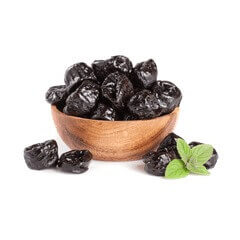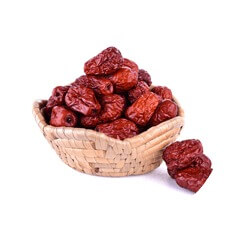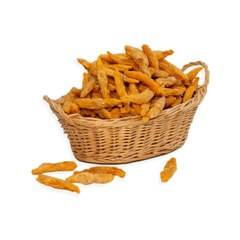What Are The Different Types Of Cereals?
According to historians, the cultivation of cereals is at the origin of the emergence of all sedentary peoples on the planet. The reason is very simple: they are an essential source of fibre, vegetable protein, vitamins, and minerals. In this article, we are going to give you in-depth knowledge of different types of cereals, so continue reading.
Wheat
It is among the most consumed cereals in the world. A distinction is made between soft wheat, or wheat, used mainly to produce flour and bread, and durum wheat, grown mainly in the regions of southern Europe and used for the production of semolina and pasta.
Here, as with other cereals, the less refined the wheat, the better it is for our health. It is recommended that the bread made from type 80 or 110 flour is a good compromise between white flour (T55), low in fibre and minerals, and wholemeal flour (T150), which can cause taste and digestibility problems.
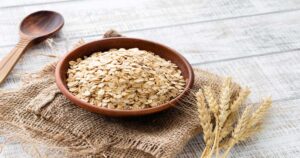
Rice
Even if it is grown with its feet in the water, rice is also part of the large family of cereals. Rice is caloric because it is rich in starch, but it offers many benefits: it contains many antioxidants, helps correct digestive disorders, and is a reservoir of minerals and trace elements.
When we think of rice, the varieties of long white rice, such as Basmati rice or Thai rice, often come to mind. But do you know all the other varieties of rice? Semi-brown or brown rice, black rice, wild rice, round and sticky rice. A variety that will delight the cooks among you! It is also a gluten-free cereal: rice flour is often used to replace wheat flour.
But what is not only used to make flour! Did you know that couscous and bulgur are also made from wheat? They correspond to an intermediate state between grain, which can be eaten whole, and flour. One ear, a thousand ways to taste it!
Spelled, Small Spelled, Rye, And Buckwheat
Spelled (or “wheat of the Gauls”) is a cereal close to soft wheat, an ancestor of wheat, but with a very hard shell. It is a nutritionally rich cereal: with fibres, proteins, vitamins, and minerals. It helps to regulate transit, blood sugar, and even cholesterol. Do not hesitate to include bread, biscuits, or pasta made from spelled flour in your diet.
Einkorn (or “einkorn”) is also very interesting from a nutritional point of view and is particularly known for its low gluten content. It produces flour that is easy to make bread: you will easily find spelled bread.
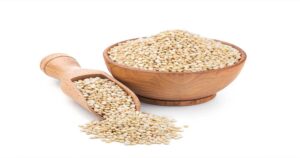
Rye also looks very similar to wheat, but its taste is more intense with a heavier density. Its flour is used to make bread with intense flavours, although this peasant “black bread” continues to suffer from a bad reputation. However, rye flour has many nutritional advantages, in greater proportions than wheat: soluble and insoluble fibers, minerals, trace elements, etc.
Finally, despite its common name, “buckwheat,” buckwheat is not a variety of wheat, nor even a real cereal (we speak of a pseudo-cereal). It makes it possible to obtain a flour slightly dotted with black, gluten-free, at the base of the famous Breton pancakes or pasta. It contains a lot of vitamins and minerals and has a strong antioxidant power.
The Corn
It is also among the most-produced cereals in the world. Its uses are numerous: whole cob, corn kernels in a salad, popcorn, and flakes in breakfast cereals. It is gluten-free and is an excellent source of carbohydrates and fiber.
Corn flour is notably the basis of polenta, widely consumed in Italy but also Bulgaria and Romania. Cornstarch is obtained from the grinding of cornstarch and not the whole grain.

Oats
Particularly present in the kitchens of northern Europe, for example, in Scottish porridge, it has long remained confined to animal feed. But it is finding its way more and more into tables, thanks to its high content of soluble fibres and its richness in lipids, particularly in unsaturated fatty acids: do not hesitate to consume it in flakes for breakfast or in pancakes or cookies.
Millet
Millet, or millet, refers to a family of small seeds produced mainly in the arid and dry areas of Africa and Asia.
Pearl millet, or small millet, generally called simply “millet,” is the most common. It is characterized by very small yellow grains with a nutty taste. Gluten-free, this cereal can easily replace wheat because it is also a source of fiber, vegetable protein, vitamins B1 and B6, and minerals.
Sorghum, often likened to millet, is eaten in porridge, flour, or flakes. Rich in iron, calcium, phosphorus, and gluten-free, it is a particularly interesting food for people with diabetes. Its fresh leaves may be toxic, but don’t worry about the seeds.

Barley
There are two types of barley: feed barley for animal feed and malting barley, which is made into malt and used in making beer and whisky. But barley is also increasingly finding its way onto our plates, as it is very rich in complex carbohydrates and minerals.
Quinoa
And quinoa in all this? Contrary to popular belief, quinoa is not really a cereal: it belongs to the category of vegetables, even if it is its seeds that are mainly consumed. Nevertheless, quinoa has many nutritional benefits and provides protein for people following a vegetarian or vegan diet.
How to Combine Cereals and Legumes?
Combining legumes and cereals is the winning combination to obtain all the essential elements for our body. This combination has long been used in many cultures and cuisines around the world, and it is finding renewed interest in vegetarian and vegan diets.
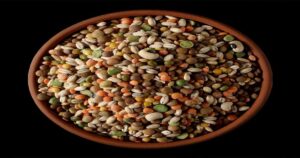
In particular, it allows us to meet all our protein needs. Indeed, vegetable and animal proteins are not completely interchangeable: proteins result from a sequence of amino acids of eight types, all essential to our body. However, if meat contains these eight essential amino acids, cereals will, for example, lack lysine, whereas, in legumes, it is methionine that is lacking. Only soy and quinoa contain all the essential amino acids. Combining legumes and cereals means meeting all your amino acids and, therefore, protein needs without consuming animal proteins (and fats)!
This association also makes it possible to benefit from high fibre intakes, which we have seen are beneficial to digestion and transit.
The idea is to combine two-thirds of cereals with one-third of legumes. Here are some ideas for combinations that can be found in very classic or original recipes around the world. Of course, you can also find ready-to-use mixes.
Visit the ADNOOR website to get the best long-grain rice, golden Sella basmati rice, brown rice, white rice, Super Kernel Basmati Rice, nuts, seeds, and dried fruits. We take pride in saying that we are the Best Basmati rice brand in Canada and have been the importers, exporters, wholesalers, distributors, and co-packers of various nuts and grains in Canada for the last 25 years. We are striving with the aim to provide quality products to our customers, and hence, they keep trusting us. So without wasting time, visit our website and order what you need.





